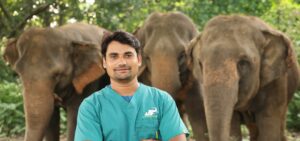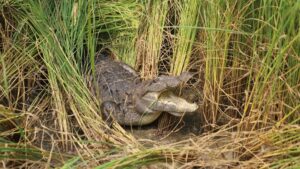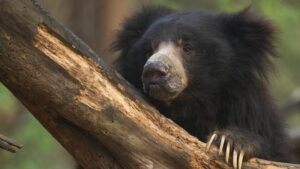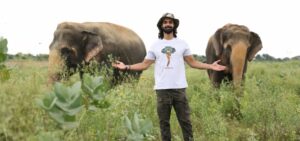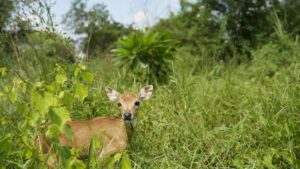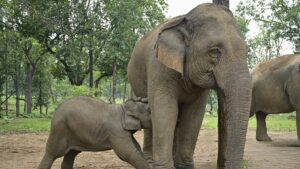Imagine a world where there’s no doctor to call, no pharmacy to visit, and no medicine cabinet to rummage through. Welcome to the life of wild animals. In the dense forests and unforgiving wilderness, surviving is a challenge. Yet, wildlife has found a way to thrive and flourish. Using the rich natural resources around them, they are capable of treating their ailments. This fascinating act has been given a rather big and fancy name by scientists. It is called zoopharmacognosy, the process by which non-human animals self-medicate by either selecting, eating or applying a variety of substances that include soil, plants, and insects with medicinal properties to treat themselves from any diseases or pathogens.

- Chimpanzees have been known to turn to nature’s pharmacy when unwell, carefully selecting specific plants that seem to ease their discomfort — an instinctive act of healing passed on quietly through generations. [Photo © Canva]
Wildlife biologists have often reported chimpanzees searching for a particular species of plants that is believed to have medicinal qualities. They have been reported to consume the bitter leaves of Vernonia amygdalina, a small shrub belonging to the daisy family and found typically in tropical Africa. It is believed that this plant contains compounds that are effective against parasites. Surprisingly, these chimpanzees frequently choose these plants when they feel sick, indicating a conscious decision taken to ensure recovery.
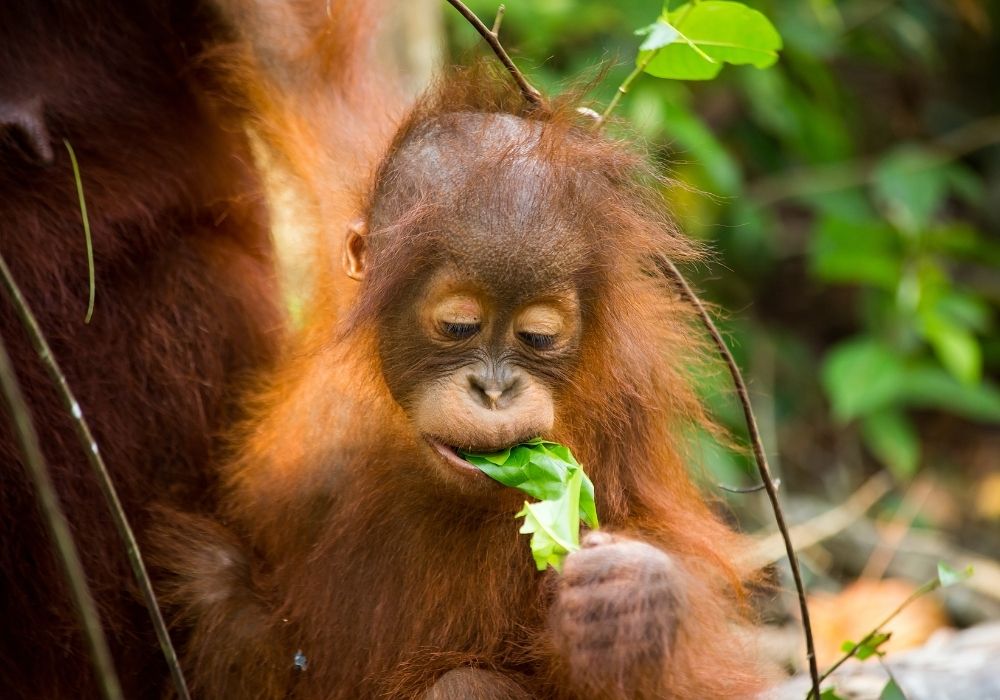
- Orangutans have been seen selectively eating bitter, fibrous plants not just for nutrition, but also to perhaps combat intestinal parasites or infections, indicating an intuitive use of natural remedies. [Photo © Canva]
In what is a similar yet astounding incident that took place in 2022, a wild Sumatran orangutan in Indonesia was spotted using leaves from the Fibraurea tinctoria plant to treat a facial wound. He was seen chewing on the leaves, extracting the sap, and then applying it to his wound. Within a month, the wound fully healed. This is the first time wildlife biologists have documented a wild animal applying a medicinal plant to cure an open wound.
If one considers that it is just leaves that serve as medicine for the wildlife, it would be a mistake. An older report from the year 2000 highlights that in Venezuela, capuchin monkeys, renowned for their intelligence and versatility, were rubbing their fur with a particular species of millipedes along with plants thought to have antimicrobial and insect-repelling properties. This behaviour falls under what is called self-anointing.
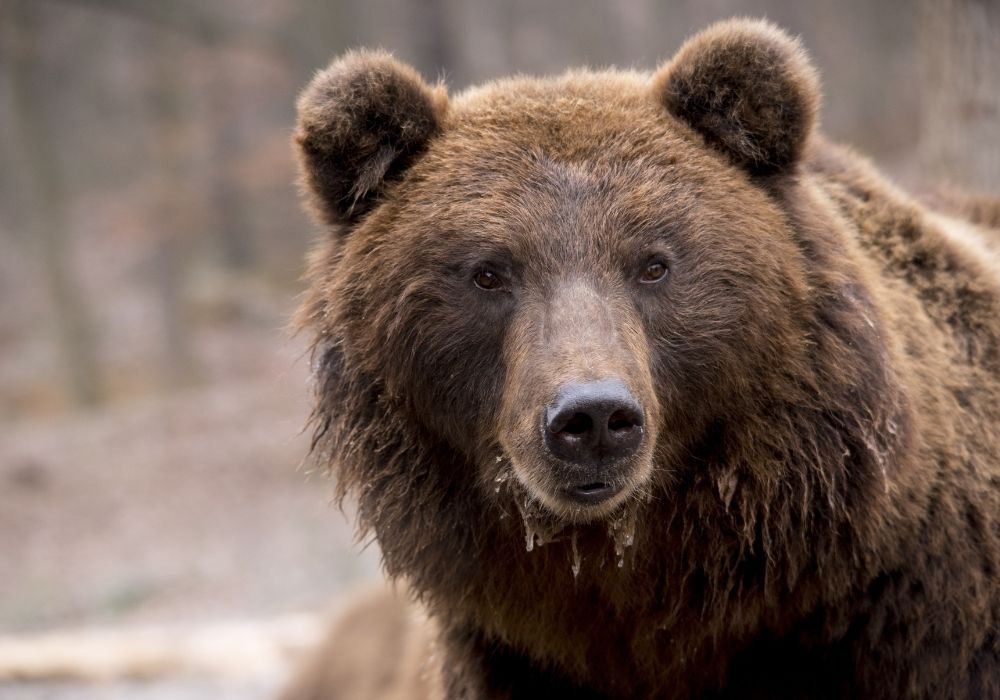
- Just like most bear species, brown bears too rub their backs and scratch their claws against tree barks for scent-marking, but recent studies have suggested that the resin released by the barks has properties that repel parasitic ticks, hinting at the practice of self-anointing. [Photo © Canva]
Oftentimes, birds, too, partake in practices that ensure their overall well-being. Parrots in the Amazon have been observed consuming clay from riverbank cliffs, and strangely, they also feed the clay to their nestlings. It was assumed that they were doing so to detoxify themselves, but extensive studies carried out by scientists have reported that this behaviour stems from the fact that the soil contains sodium and that they are actually maintaining the levels of essential minerals in their body
Another technique many avians follow is “anting”, a behaviour that involves rubbing ants on their feathers. The formic acid produced by the ants helps deter parasites and skin irritations.
House sparrows incorporate neem leaves into their nests to keep them bug-free. But in 1998, during a malaria outbreak in Kolkata, West Bengal, scientists observed how they switched to leaves of the paradise flower tree that are rich in quinine, an anti-malarial drug, showcasing how these little birds were taking an intelligent adaptive approach.
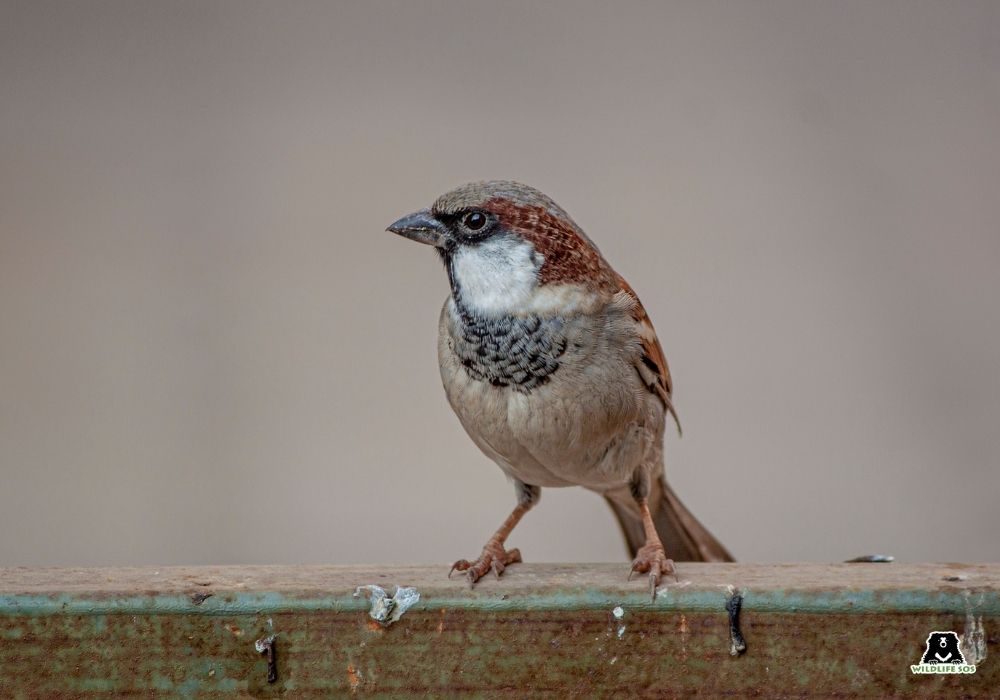
- House sparrows line their nests with antimicrobial plants, instinctively crafting spaces that can ward off pests and protect their chicks. [Photo © Wildlife SOS/Akash Dolas]
A common sight that many of us at Wildlife SOS have witnessed is elephants taking a dust or mud bath. Elephants often take these baths and coat themselves with sand and soil. They do this not just for fun; dust acts as a protective layer against sunburn, keeps the body cool and also prevents insect bites. Additionally, the minerals in the soil can help soothe itches and wounds.

- At Wildlife SOS, our rescued elephants often indulge in long, unhurried dust baths — coating themselves in layers of soil not just to cool down, but to protect their skin from sun and insects. [Photo © Wildlife SOS/ Mradul Pathak]
When it comes to self-medication, insects themselves are not far behind. The monarch butterfly lays its eggs on milkweed plants that contain chemicals that are toxic to other animals. The caterpillars, when they hatch, ingest these compounds, which help protect them from infections. Insects like honey bees also exhibit self-medicating behaviours. They collect tree resins to create propolis, a mix of resin and wax that can ward off fungi and bacteria, to line their hives and thereby protect the colony. While research is still ongoing, these behaviours suggest a level of self-awareness and intentionality in addressing health concerns.
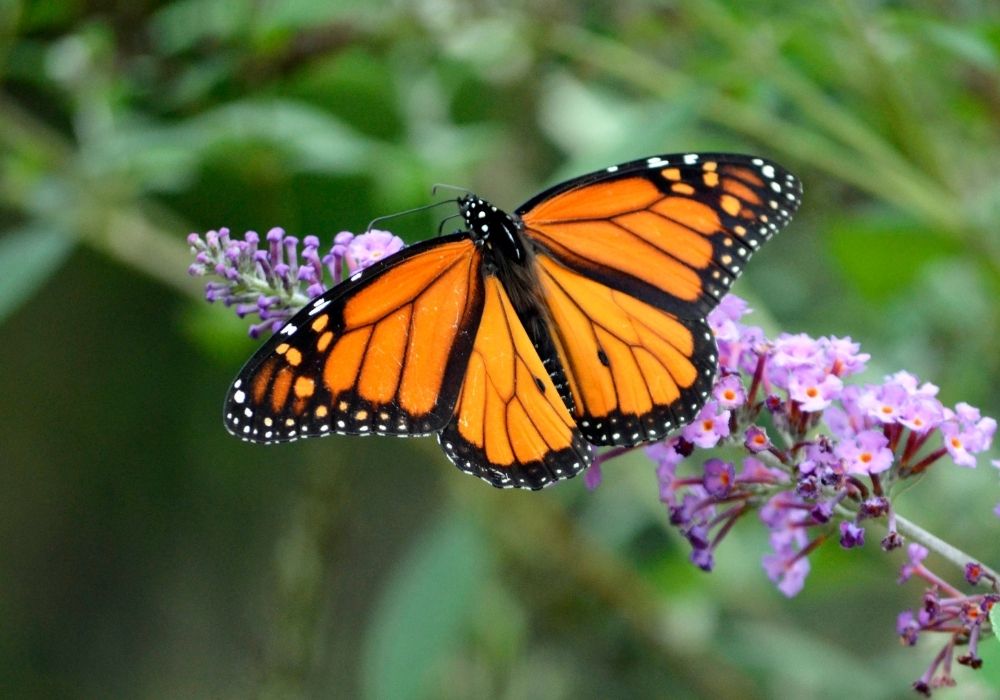
- Monarch butterflies rely heavily on milkweed plants, which serve as the only reliable host for their larvae. [Photo © Canva]
The term “zoopharmacognosy” is derived from the Greek words zoo (animal), pharma (drug), and gnosy (knowing). It refers to the study of how animals self-medicate by selecting and using natural substances to prevent or cure ailments. Researchers and wildlife biologists continue to document unusual behaviours observed across various species to understand what led them to carry them out. Understanding their conduct not only sheds light on animal intelligence and adaptability but also reveals medicinal properties of nature that may have the potential for human medicine and medical research. By paying attention to these natural pharmacists, we may be opening doors to amazing breakthroughs in our health and well-being.
In essence, the wild serves as a vast, open-air laboratory where countless species have, over millennia, developed and refined their healing practices. The ability of animals to cure themselves underscores the importance of biodiversity and the preservation of natural habitats. As we continue to explore and understand wildlife, we gain valuable knowledge that can inform conservation efforts.
To dive deeper into the wonders of the wild, subscribe to our newsletter and stay up to date with more thrilling wildlife stories!
Feature image: Wildlife SOS/ Mradul Pathak

